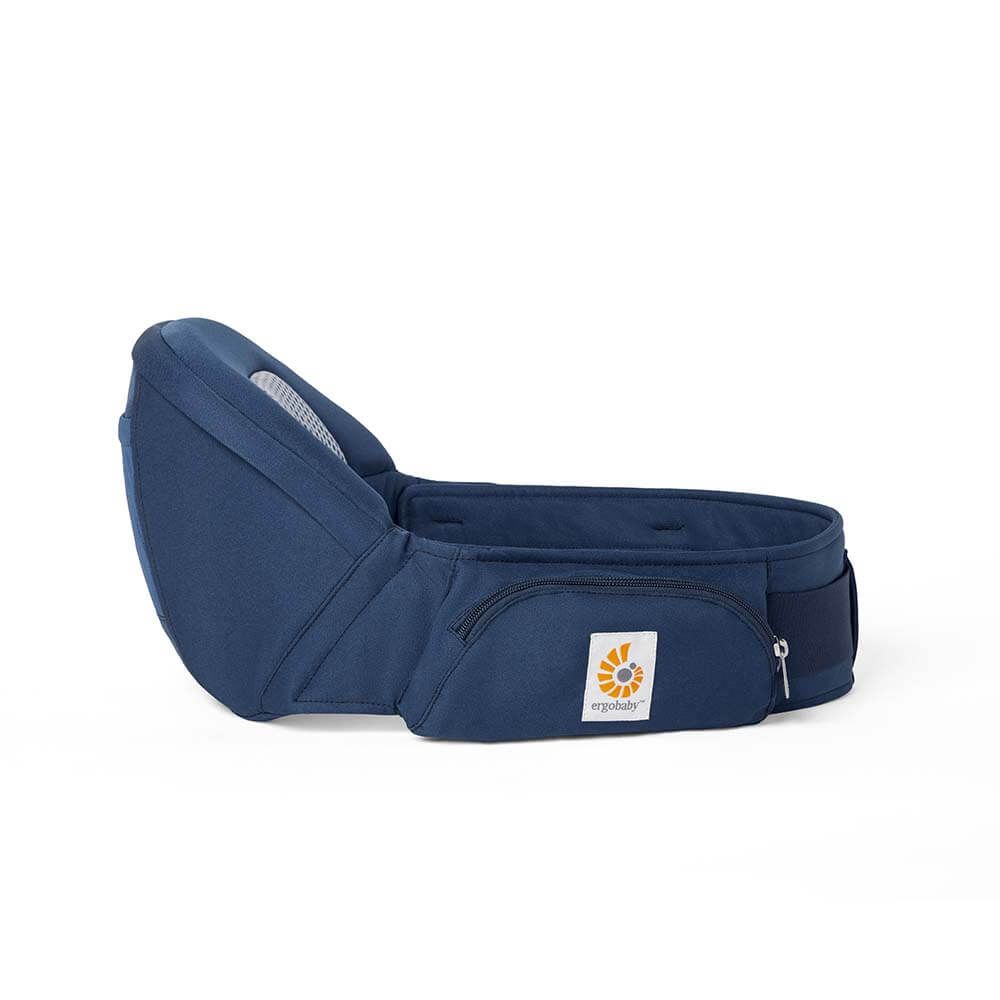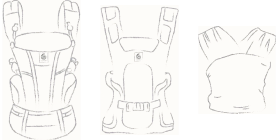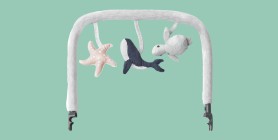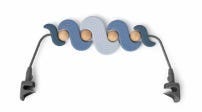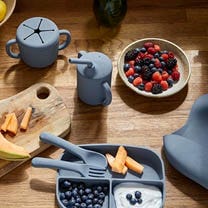Page 4 - Motherhood
The AAP recommends exclusive breastfeeding for the first 6 months, and that babies continue to breastfeed for one year and for as long as is mutually desired by the mother and baby. Here are a few tips to help you get moving in the right direction with your little one:
- Get help before baby arrives. Plan to take a pre-natal breastfeeding class. It’s important to understand the basic science of breastfeeding so you can take confidence in your body doing what it is designed to do and provide for your baby. What are the stages of milk production? How much milk does your baby really need in the first few days of life? What does it mean to properly position your infant and latch? Knowledge and at least thinking about the questions of how to nourish your baby will serve you well before your little one arrives. Don’t wait to get help and reach out if you have small questions or big concerns. Take the time to think about what’s coming so you can trust yourself and feel more in control.
- Plan on
Some myths
“Colostrum isn’t enough to meet babies needs”
For the first few days of your baby’s life, newborns will be accessing a form of breastmilk called colostrum. It’s nutrient-dense and contains so many disease-fighting properties that can’t be found anywhere else! No wonder it’s referred to as “liquid gold." Even though it’s not large in volume, colostrum can still meet the needs of a newborn (1).“It’s normal for your nipples to hurt”
There’s a difference between postpartum nipple tenderness and “Ouch! Ouch!” pinching pain. Nipple pain is not normal and is a sign that something’sBananas are a great food for little ones. They have a soft texture and natural sweetness that babies love. Ripe bananas are easy to digest and provide needed energy for growing bodies. We also eat a lot of eggs in our house. When my son was introduced to solids we started with egg yolks and waited to introduce the whole egg with whites. The yolks are where the most beneficial nutrients are found. They are stocked with B vitamins, healthy fats, choline, and the harder to obtain fat-soluble vitamins A & D. Once we introduced egg whites, these healthy flourless banana pancakes were a hit! They include only 3-ingredients and are super simple to make. Eggs contain an easily absorbable form of iron, a nutrient that babies start to require more of around the time solids are introduced. If the eggs are pasture raised they also contain the powerful fat needed for babies brains, DHA.
Ingredients
1.5 bananas *should be quite ripe with brown spots 2 large eggs 1/8 teaspoon baking powder (optional for
Happy IBCLC Day! The International Board of Certified Lactation Consultants Day falls on the first Wednesday of March. And it’s a great day to recognize those that helped you to reach your breastfeeding goals. With that in mind today, I wanted to share many of the ways that IBCLCs love to help empower you to meet your personal breastfeeding goals.
We are there to help you even before your little one arrives.
Taking a prenatal breastfeeding class with an IBCLC is a great way to get off on the right breastfeeding foot. Not only will it help you feel more confident right from the start but also can provide you the tools to recognize any issues you might have so you can get the support you need right away.
We aren’t just here for you when the baby is brand new.
Getting ready to go back to work? Thinking of starting solids? We love to help mamas and babies throughout the entire feeding journey.
We love to support moms and babies not only in times of joy but also through the tough times.
Let
When my little one was ready for solid foods I decided to use the baby-led weaning approach. In this method finger foods are introduced right from the start and purees are skipped altogether. It was a fantastic fit for my family and I believe it really helped our son establish healthy eating habits. He’s almost 2 years old now and has a fantastic appetite with an impressively adventurous palate. Here are some reasons that we love about baby-led weaning.
Experiencing & exploring foods
Babies love the opportunity to interact with food! If spoon-feeding, there are still some approaches from baby-led weaning that help engage baby in mealtime. Babies often spit out puree and try to grab it with their hands. That's because they're curious and want to be involved, but parents are usually quick to wipe it up or scoop it back into baby's mouth. Try putting a small spoonful of puree on your baby’s tray for them to touch & taste on their own before you begin feeding - and again if changing flavors.
One of the most frequently asked questions from my clients and members of our instagram support forum is “How can I increase my milk supply?” It’s a valid concern considering one of the top three reasons mothers wean is they are concerned about milk supply (1). Today I’m here to give you three easy ways to ensure your milk production will meet baby’s needs!
Ensure efficient breast emptying
Breastmilk is made on a supply-demand chain. Think about a store inventory. If an item is popular, and being regularly removed from the shelves each day, the item will continually be in stock. If the item sits and sits and no one buys it, pretty soon it will be discontinued. The same is true for milk production! The more is removed, the more is made. Sometimes women put their baby to breast frequently, but they are not attached well enough or alert enough to remove milk efficiently. Some great things to look for during latch include a deep attachment (baby drawing in more tissue than just the nipple),
Congratulations! You’re going to be a Mama! Have you been feeling the urge to tackle the garage clutter? Clean out the attic? Organize everything in your house? Guess what - you’re nesting! The nesting instinct is a primal instinct that goes back thousands of years. It’s nature’s way of helping you feel confident and ready to protect, nurture and welcome a child into your home. While this can be a productive moment to accomplish great things — like taking a birthing class, decorating your nursery or organizing your house —it is also important not to get too overwhelmed and stressed out. Remember, your baby doesn’t care if you haven’t organized your sock drawer.
Getting Ready For Baby
A great way for you to have some control and knowledge about what is to come is to educate yourself and make your plans known. While the urge to scrub clean all the grout in your entire house may be strong, take some time and make a list of the highest priority items that you feel must be accomplished
 Please feel free to improvise with whatever veggies or grains you have on hand. Roasting the veggies in the oven makes them super sweet. My kids have sweet tooths, and both liked this stew.
Please feel free to improvise with whatever veggies or grains you have on hand. Roasting the veggies in the oven makes them super sweet. My kids have sweet tooths, and both liked this stew.
Ingredients
2 cups of dried black beans 2 sprigs of fresh epazote, or 1 teaspoon dried 2 bay leaves 1 pound of diced butternut squash 3 carrots 2 bell peppers 6 cloves of garlic ½ tablespoon of avocado oil or olive oil 1 cup of kaniwa, quinoa or amaranth ½ teaspoon salt ½ teaspoon pepper ½ teaspoon turmeric 1 teaspoon cuminInstructions
1. Rinse the beans, place in a bowl and then cover with 2-3 inches of water. Let sitHere you are -- you finally think you have this breastfeeding thing down. No more sore nipples, baby is gaining weight, sleeping in longer stretches, and you’re finally starting to feel like your old self again. Then suddenly you have a drop in your milk supply in what seems like overnight. This sudden change isn’t uncommon to nursing mothers, but it can cause momentary panic in a new mom and leave you wondering why this is happening. Many things can cause a once robust milk supply to drop. It could be that you went back to work and are now separated from your baby for longer stretches during the day, perhaps you had an illness, have had recent stress in your life, return of your menstrual cycle, or just plain haven’t been taking good care of yourself. Whatever the reason for this drop, there are things you can do to increase your milk supply and bring it back up to the level it once was.
Can you increase your milk supply after it decreases?
 Yes. The fastest way to increase your milk supply
Yes. The fastest way to increase your milk supply





